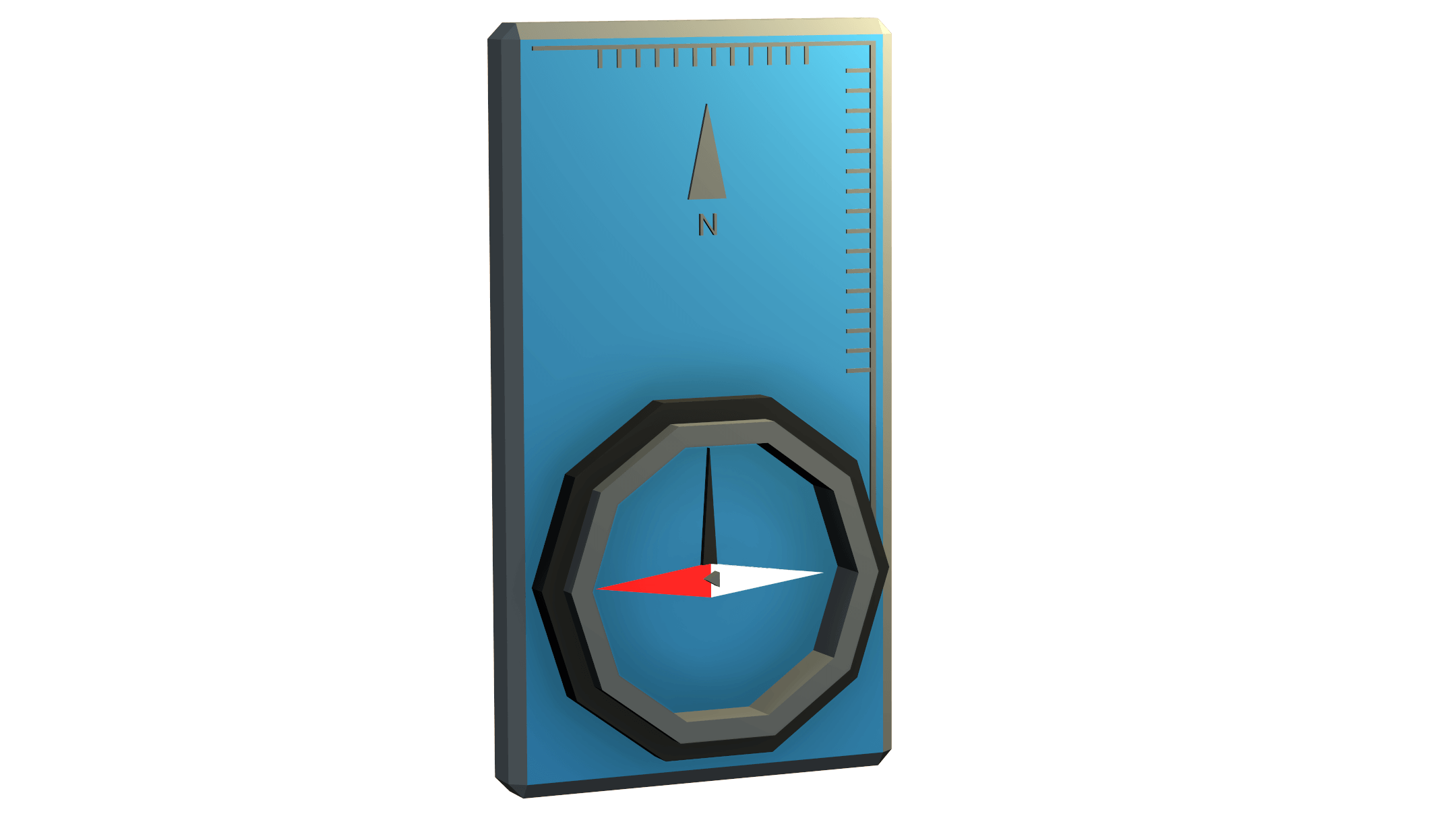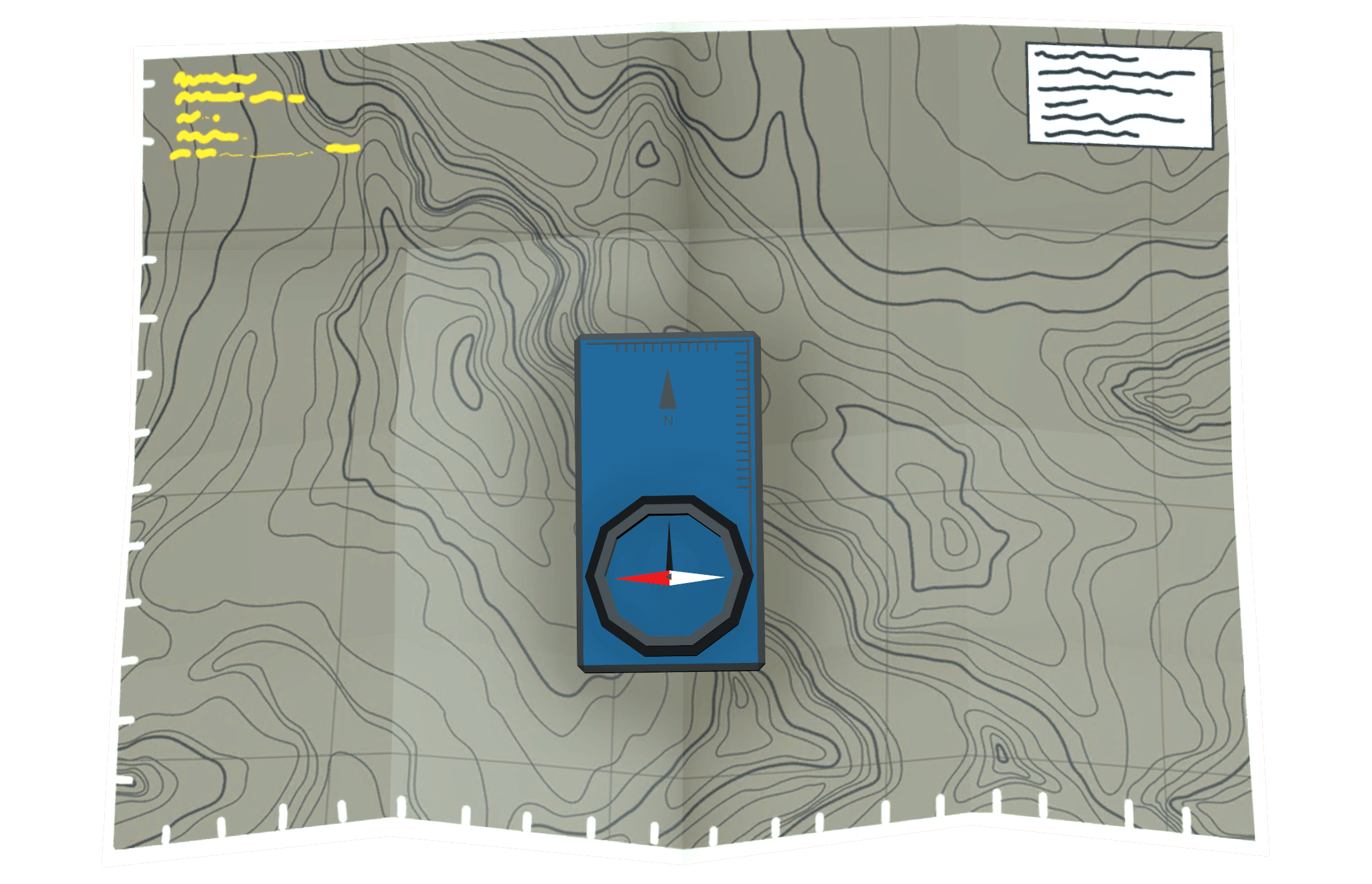How do you navigate with a map and compass?

If you are using a map and compass in the field, you should understand the difference between "true north" and "magnetic north." This difference is referred to as "declination" and is measured in degrees.
A compass will always point to magnetic north. When true north and magnetic north are in the same line, (0 degrees declination), your compass will point to true north. However, if you are east or west of 0 degrees declination, your compass will always point to magnetic north and thus your reading will not be to true north. Remember, the grid lines on your topographic map are drawn to true north.
Topographic maps have the magnetic declination noted in the lower left hand corner.
The orienteering compass is a very important piece of equipment for outdoor travel. A good orienteering compass has these features:
- A clear baseplate so you can see your map underneath the compass
- A baseplate has straight sides for lining up two points or for drawing lines on your map
- A housing that is filled with liquid to keep the magnetic needle from bouncing around too much when you are reading your compass
It is important to always remember the difference between the direction arrow on the baseplate and the orienting arrow inside the compass housing. The direction arrow is the arrow you will follow or use to point the compass when taking a bearing. It is parallel with the side of the compass baseplate.
The orienting arrow is used to orient yourself or your map by lining it up with the magnetic needle. You never "follow" your orienting arrow.

Before you set off on your day's hunt, determine your location on the map. Spend a few minutes studying on the map the area in which you will hunt.
Look around for a second or two. If it's a sunny day, note the sun's location. The sun's position is one way of keeping track of direction without checking your compass. During the day, the sun travels from east to west. By noting the positions of the sun, you should always be aware of your general direction of travel and the way to get back.
Questions to ask are:
- What direction does the trail run?
- Are there any creeks, lakes, or utility right-of-ways nearby?
- What direction do they run?
- Are there any other roads or trails in the general area?
With questions such as these answered, take out your compass and determine the general direction you will be traveling during your hunt.
Remember, a compass is your ace in the hole. Use it when you must, but try to rely on your awareness of the topography and the sun to help you keep your bearings. Always trust your compass.